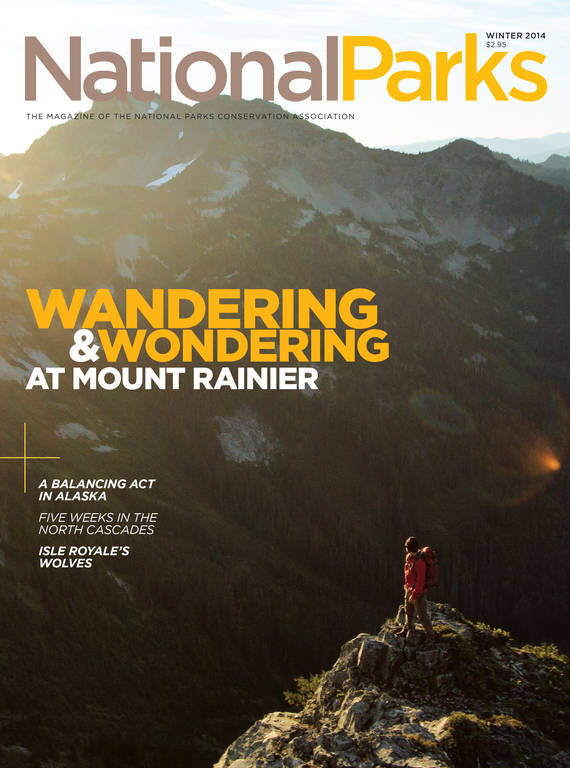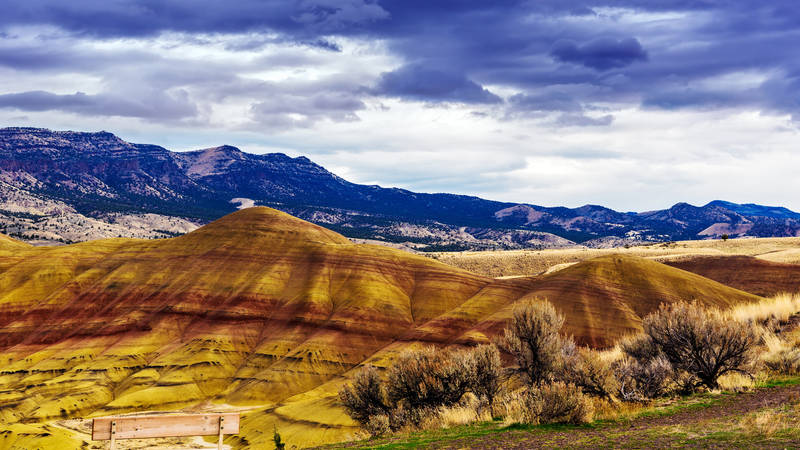Winter 2016
Striking Desert Gold
Will a wet winter bring a spring super bloom to Death Valley?
Aficionados of music videos from the salad days of MTV might recognize these lyrics from “In a Big Country,” a 1983 hit for the Scottish band, Big Country: “I’m not expecting to grow flowers in a desert/ But I can live and breathe and see the sun in wintertime.”
These lines provided a steady backbeat for my own journey to some decidedly big, open country—a trip to Death Valley National Park last March with NPCA’s travel program. After a particularly cold and restless mid-Atlantic winter, I was more than ready to live, to breathe, and to see the sun in the waning days of that long season.
Although I wasn’t necessarily expecting a profusion of flowers, my travel party was rewarded by an impressive showing of desert ephemerals—roadsides dotted white and lavender-pink by gravel ghost and desert five-spot, washes and ravines punctuated by the brilliant fuchsia of beavertail cactus flowers, open expanses of the park covered broadly, if not thickly, with the showy yellow flowers of desert gold.
This spring, there’s reason to believe the bloom could be even better.
An early October rainstorm brought .7 inches of rain over two days—more than a third of the park’s average annual rainfall—a veritable deluge by Death Valley standards. Two weeks later, thunderstorms dropped another half inch of rain, producing flash floods. The weather caused millions of dollars of damage, but there is a silver lining. This early autumn soaking and the gentle winter rains of a predicted El Niño are key ingredients for something this desert park hasn’t seen in more than a decade: a super bloom.
Death Valley’s last two super-bloom events occurred in 1998 and 2005, and Alan Van Valkenburg, a ranger who also leads wildflower walks, was there to witness it all firsthand.
“The alluvial fans, hillsides, valley floor, and washes were covered with solid carpets of flowers that went on for miles and miles,” he said. “In a normal springtime there will be scattered flowers here and there, but during a super bloom, almost every possible place a flower can grow, it will. It totally transforms Death Valley into a valley of life.”
The predominant color of that transformation will be a sunny yellow. Although other wildflower species will bring splashes of purple and pink, the stars of the show will be desert gold at lower elevations and golden evening primrose and desert dandelion at higher elevations.
If it comes to pass, a super bloom could start as early as late January and likely would peak from late February to mid-April. The indications are good, but the sprouts, which have already emerged, still need the right combination of temperature, wind, and moisture to thrive.
“A hard freeze this winter could kill the sprouts, too much wind could desiccate them, or the El Niño rains could come too late or too little,” said Van Valkenburg. But still, he’s optimistic. “I’m usually pretty cautious when predicting a super bloom,” he said, “but so far, everything seems to have fallen into place.”
Cover photo: © Kip Evans Photography
About the author
-
 Todd Christopher Senior Managing Director, Digital & Editorial Strategy
Todd Christopher Senior Managing Director, Digital & Editorial StrategyTodd guides NPCA's content strategy and leads the team that produces our website, magazine and podcast. He is also the author of The Green Hour: A Daily Dose of Nature for Happier, Healthier, Smarter Kids.



